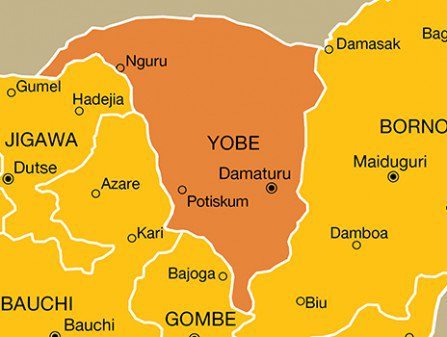Sixteen years ago, many assumed that building a road from Gashua to Yusufari in northern Yobe State was an impossibility.
There are 31 kilometres in between the two towns.
Hope as Yobe begins Climate Action Plan
The viable agricultural revolution in Yobe
The idea of impossibility was born of experiences of travelling on that desert and dusty path, with vehicles and people, often moving, as if on a wild guess or a game of chance, trudging through sand dunes, acacia trees and tonnes of thorn.
It was a short journey full of suspense.
The wheels of the vehicles can be stuck in sand dunes that can terminate the journey or make it look like an adventure.
The dust will keep rising and obscuring the view of both the driver and the commuter.
The types of vehicles that undertook such a journey were largely open four-by-four trucks and outdated USSR made military vehicles.
Whenever such vehicles were auctioned, they were moved to start a new life on the route from Gashua to Yusufari and Bulatura and beyond.
These are places quite close to Nigeria’s border with Niger Republic.
In 2009, my colleagues and I visited Bulatura on BBC Hausa’s outstanding ‘BBC Hausa A Karkara’ – village roadshow that took radio to the people; to neglected places.
As we finished broadcast in Bulatura, a man took me aside and started narrating how desert encroachment was working hard to render him homeless.
The sand dunes moved and he had to move too. Years ago, he said, desertification claimed his farm and he was close to tears while narrating how it was moving towards putting him and his family in a cul-de-sac of desert.
Days before my recent visit to this area, a friend told me that now, you can travel to Yusufari in minutes and return to Gashua.
It sounded like a fantasy until I took a road that leads to Yusufari.
Although I did not travel all the way to Yusufari, I took the road and went on and on, as if trying to cast away doubts.
Indeed there was a road to Yusufari and beyond.
In fact, there is now a road that easily connects people through; to Geidam and Baymari.
These are places in the vast arid part of Yobe State that were largely neglected to the extent that, years ago, many people never believed a road could be built to connect communities that need to be accessible to each other to survive.
Until the former governor of Yobe State, Alhaji Ibrahim Geidam, built the roads that connected these places within minutes rather than the previous hours of toil.
What these roads mean socially and economically can hardly be understood if one never experienced the daunting nature of travels in these areas.
People in some parts of Nigeria need only roads and development follows.
On the road to Yusufari, there is a gigantic ongoing hospital project that is near completion.
The sign board by the road shows that it is a project brought by the Senate President, Ahmad Lawan.
It is meant to be a women and children’s hospital but it is going to be more than that.
With rapid increase in population, the hospital standing tall in the desert will be of service to both the people of Gashua and Yusufari.
The road to Yusufari began from a point where a new model primary school was built by Governor Mai Mala Buni.
Such schools were built across all zones of the state.
Getting education right from the basic point, or from the beginning was the reason why such schools were provided.
The road to Yusufari, for me, on that day, ended with a housing estate project the current government of Yobe State is undertaking in major towns.
In areas largely neglected by federal government, until almost a decade ago, a road is more than a road.
It is more than mere concrete and asphalt.
It is also a new lease of life that opens the doors of possibilities.
Location close to a border creates real and imagined distance; the type of distance that begets an isolation that, to a large extent a road can eliminate.
For me, the road to Yusufari is not another version of Robyn Davidson’s 1977 trek across Australian desert accompanied by four camels.
It is not the journey of a stranger in the wilderness.
But it is an experience that shows that the familiar can wear the look of the strange.
It just depends on our ways of seeing things.

 Join Daily Trust WhatsApp Community For Quick Access To News and Happenings Around You.
Join Daily Trust WhatsApp Community For Quick Access To News and Happenings Around You.


